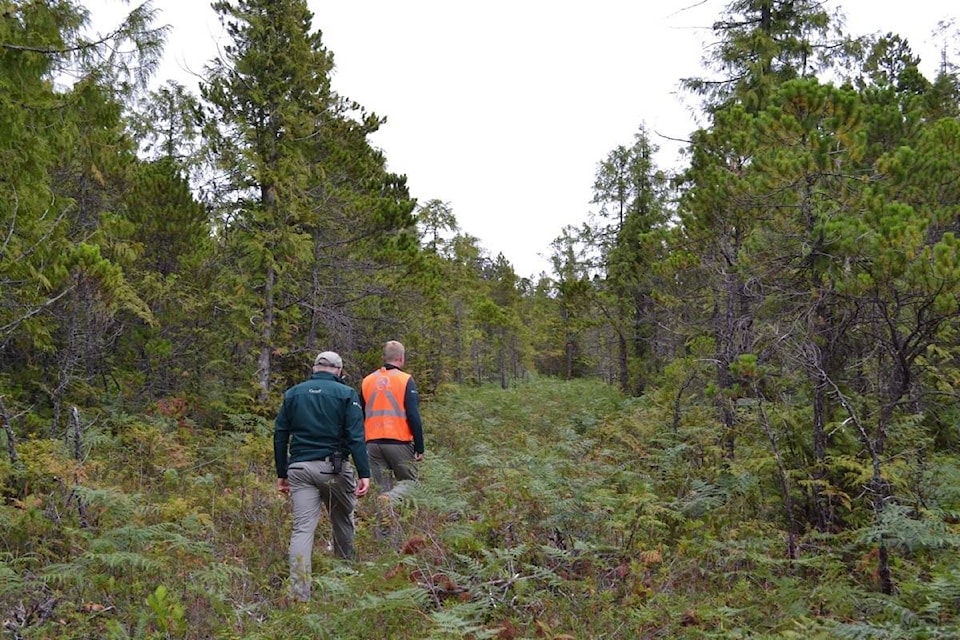By summer of 2020, visitors to the Pacific Rim will have a 25-kilometre multi-use trail to enjoy courtesy of an $18 million investment from the Liberal government.
The paved pathway, dubbed the ‘Pacific Traverse Trail,’ will connect Tofino and Ucluelet, with the northern nod being a new, 50-stall parking lot at the base of Radar Hill and the southern nod being the current visitor centre located at the Tofino-Ucluelet junction.
Just north of Long Beach, on the edge of the Tla-o-qui-aht First Nation’s community of Esowista, part of Highway 4 will literally be shifted over to accommodate the PTT project.
“Because of the narrow area between the highway and the community of Esowista, what will happen here is the highway will actually be pushed over two to three metres,” explained Pacific Rim National Park Reserve (PRNPR) resource conservation manager Renee Wissink.
“So, the PTT will actually go where the southbound traffic lane now sits and the highway will be pushed over. It’s about a 250 to 300-metre section of the highway that will be pushed over to accommodate the PTT in this area [adjacent to Esowista],” he said, adding cement barriers will put in place for visitor safety.
Saya Masso, TFN natural resources manager, said the new path is a management issue for Tla-o-qui-aht Tribal Parks.
“We are going to have increased traffic. It will just compound the problems and the relationship between Tla-o-qui-aht and the Park with more traffic, more people coming through our community looking for places to camp, more beaches that we lose privacy to,” he said.
“We do support the trail going in, but it was also our aspiration to properly manage [the visitors] and seek an arrangement with Tla-o-qui-aht and Pac. Rim that our Guardians be resourced adequately and on a level like Parks Canada to be able to manage that increased traffic.”
Masso told the Westerly News an official letter was sent to Parks Canada asking them to implement a First Nations service fee for the use and alienation of their land.
“Parks Canada currently doesn’t want to carve up the pie they currently have. We see that and we are looking at trying to ask them to go to Ottawa to create a First Nations service fee,” he said.
“We are being negatively impacted by the amount of traffic and the existence of the federal park. Even if $3 were added to every parking spot or campground I’m sure it would add up to something when we currently have nothing.”
According to Masso, a First Nations fee could be justified by several projects, including: language and signage, totem poles at every venue, and training for First Nations Guardians to help manage the trail.
“Hopefully it would be a win-win for everyone to have enhanced First Nations services.”
Masso went on to say that the new cycling path would provide safe travel for the approximately 375 people living in the communities of Esowista and Ty-Histanis who regularly bike or hitchhike the 15-kilometre to Tofino.
Eliot Leyenhorst, bike mechanic at Tofino Bikes, concurred.
“It’s going to be really helpful to have a safe place to ride that’s not on the shoulder. You’re very, very close to cars right now,” said Leyenhorst.
“We are kind of stuck between Cox Bay and Tofino and having a path that’s going to go through the forest is just going to make cycling better. It’s going to bring the joy more, I think. That’s an experience that people are longing for here,” said the Tofino local.
Parks Canada staff and PTT project liaison Jessie Hannigan said construction on the multi-use path is not outpacing social and environmental obligations.
“We have environmental monitors in the field every day, sweeping the area for nesting birds, slugs, and frogs.”
Hannigan said, after consulting with specialists, alternate routes were determined to avoid sensitive ecosystems.
“In building a trail that comes through this area we want to make sure we are showcasing it without doing any harm,” said Hannigan.
Wissink noted the PTT would have a flow and sinuosity that allows maximum sightlines.
RELATED ARTICLES
Construction starts on $18 million Park Reserve path between Tofino and Ucluelet (Feb. 23, 2017)
Park Reserve amends path plans between Tofino and Ucluelet (July 4, 2017)
Tla-o-qui-aht First Nation welcomes Justin Trudeau back to Tofino (Aug. 5, 2017)
